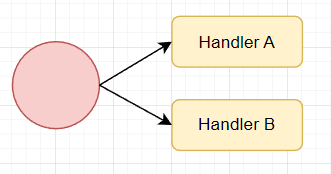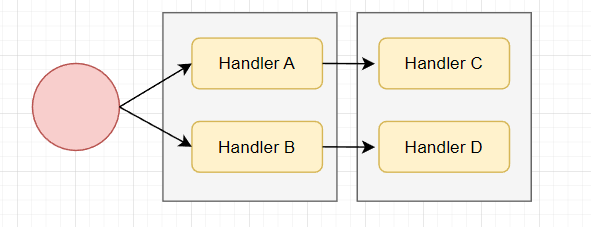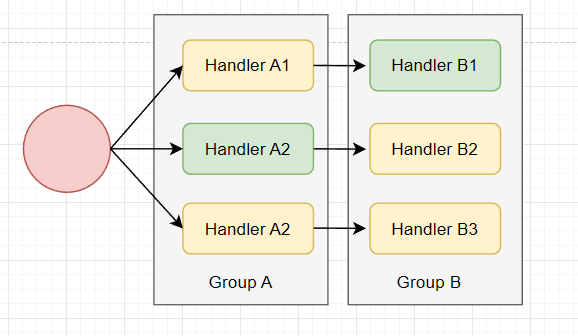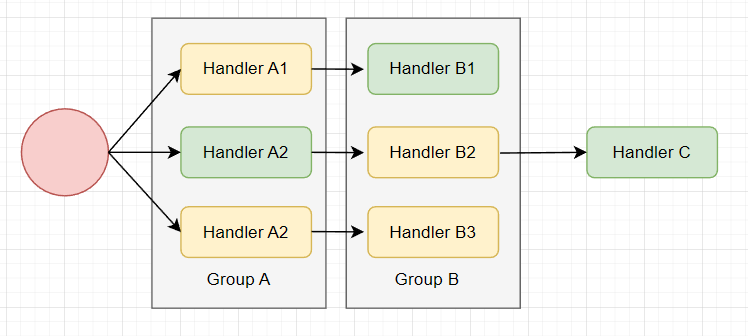前言
Disruptor是一个高性能的无锁并发框架,其主要应用场景是在高并发、低延迟的系统中,如金融领域的交易系统,游戏服务器等。其优点就是非常快,号称能支撑每秒600万订单。需要注意的是,Disruptor是单机框架,对标JDK中的Queue,而非可用于分布式系统的MQ
本文基于Disruptor v3.4.*版本
Demo
既然是简单使用,这阶段只需要关注:
- 生产者
- 消费者:EventHandler
- 消息的传递:消息的载体Event
简单例子
首先,我们定义消息的载体Event,生产者向消费者传递的消息通过Event承载
class LongEvent {
private long value;
public void set(long value) {
this.value = value;
}
@Override
public String toString() {
return "LongEvent{" + "value=" + value + '}';
}
}
然后定义Event生产工厂,这用于初始化Event
EventFactory<LongEvent> factory = new EventFactory<LongEvent>() {
@Override
public LongEvent newInstance() {
return new LongEvent();
}
};
接下来就可以构建Disruptor了,以下是完整代码
// 消息载体(event)
static class LongEvent {
private long value;
public void set(long value) {
this.value = value;
}
@Override
public String toString() {
return "LongEvent{" + "value=" + value + '}';
}
}
// 发布消息的转换器
public static void translate(LongEvent event, long sequence, ByteBuffer buffer)
{
event.set(buffer.getLong(0));
}
public static void main(String[] args) throws Exception {
// event生产工厂,初始化RingBuffer的时候使用
EventFactory<LongEvent> factory = new EventFactory<LongEvent>() {
@Override
public LongEvent newInstance() {
return new LongEvent();
}
};
// 指定RingBuffer的大小(必须是2的n次方)
int bufferSize = 1024;
// 构造Disruptor(默认使用多生产者模式、BlockingWaitStrategy阻塞策略)
Disruptor<LongEvent> disruptor = new Disruptor<>(LongEvent::new, bufferSize, DaemonThreadFactory.INSTANCE);
// Disruptor<LongEvent> disruptor = new Disruptor<>(factory, bufferSize, DaemonThreadFactory.INSTANCE, ProducerType.MULTI, new BlockingWaitStrategy());
// 设置消费者
EventHandler<LongEvent> handler = (event, sequence, endOfBatch) -> {
System.out.println("Event: " + event);
};
disruptor.handleEventsWith(handler);
// 启动disruptor,启动所有需要运行的线程
disruptor.start();
RingBuffer<LongEvent> ringBuffer = disruptor.getRingBuffer();
ByteBuffer bb = ByteBuffer.allocate(8);
for (long i = 0; i < 100; i++) {
bb.putLong(i);
// 发布事件
ringBuffer.publishEvent(LongEventMain::translate, bb);
}
}
消费者组合(多使用场景)
Disruptor不仅可以当高性能的队列使用,还支持消费者的串行、并行消费等
以下只展示关键代码(设置消费者),其余部分参考上一节的简单demo
- 单链串行
disruptor.handleEventsWith(handlerA).then(handlerB); - 并行
disruptor.handleEventsWith(handlerA, handlerB); - 链内串行,多链并行
disruptor.handleEventsWith(handlerA).then(handlerC); disruptor.handleEventsWith(handlerB).then(handlerD); - ****菱形(C、D都执行完才到E)****
disruptor.handleEventsWith(handlerA).then(handlerC); disruptor.handleEventsWith(handlerB).then(handlerD); disruptor.after(handlerC, handlerD).then(handlerE); - 分组(AB都执行完才到CD)
disruptor.handleEventsWith(handlerA, handlerB).then(handlerC, handlerD); - 分组不重复消费
组内竞争,组外串行:每个消息在每个分组中只有一个消费者能消费成功,如果就是分组A中只有HandlerA2能得到数据,分组B中只有HandlerB1获得
// 注意:此处的handler实现的是WorkHandler接口 disruptor.handleEventsWithWorkerPool(handlerA1, handlerA2, handlerA3) .then(handlerB1, handlerB2, handlerB3); - 分组不重复消费(菱形)
// handlerA、handlerB实现WorkHandler接口 // handlerC 实现EventHandler或WorkHandler接口均可 disruptor.handleEventsWithWorkerPool(handlerA1, handlerA2, handlerA3) .then(handlerB1, handlerB2, handlerB3) .then(handlerC);等待策略
消费者速度比生产者快时,需要等待。因此就有了不同的等待策略以适应不同场景
- BlockingWaitStrategy
默认策略。使用锁和 Condition 的等待、唤醒机制。速度慢,但节省CPU资源并且在不同部署环境中能提供更加一致的性能表现。
-
YieldingWaitStrategy
二段式,一阶段自旋100次,二阶段执行Thread.yield,需要低延迟的场景可使用此策略
-
SleepingWaitStrategy
三段式,一阶段自旋,二阶段执行Thread.yield,三阶段睡眠
-
BusySpinWaitStrategy
性能最高的策略,与 YieldingWaitStrategy 一样在低延迟场景使用,但是此策略要求消费者数量低于 CPU 逻辑内核总数
其他小技巧
-
清除消息载体 Event 中的数据
如果 Event 中存在大对象,应该在消费者链的末尾,添加一个清除数据的消费者,以帮助jvm垃圾回收。demo中的 LongEvent 是
private long value;所以没必要添加。
- BlockingWaitStrategy
总结
本文介绍了 Disruptor 的简单使用,以及复杂场景下消费者的配置。下篇开坑 Disruptor 源码解析。






